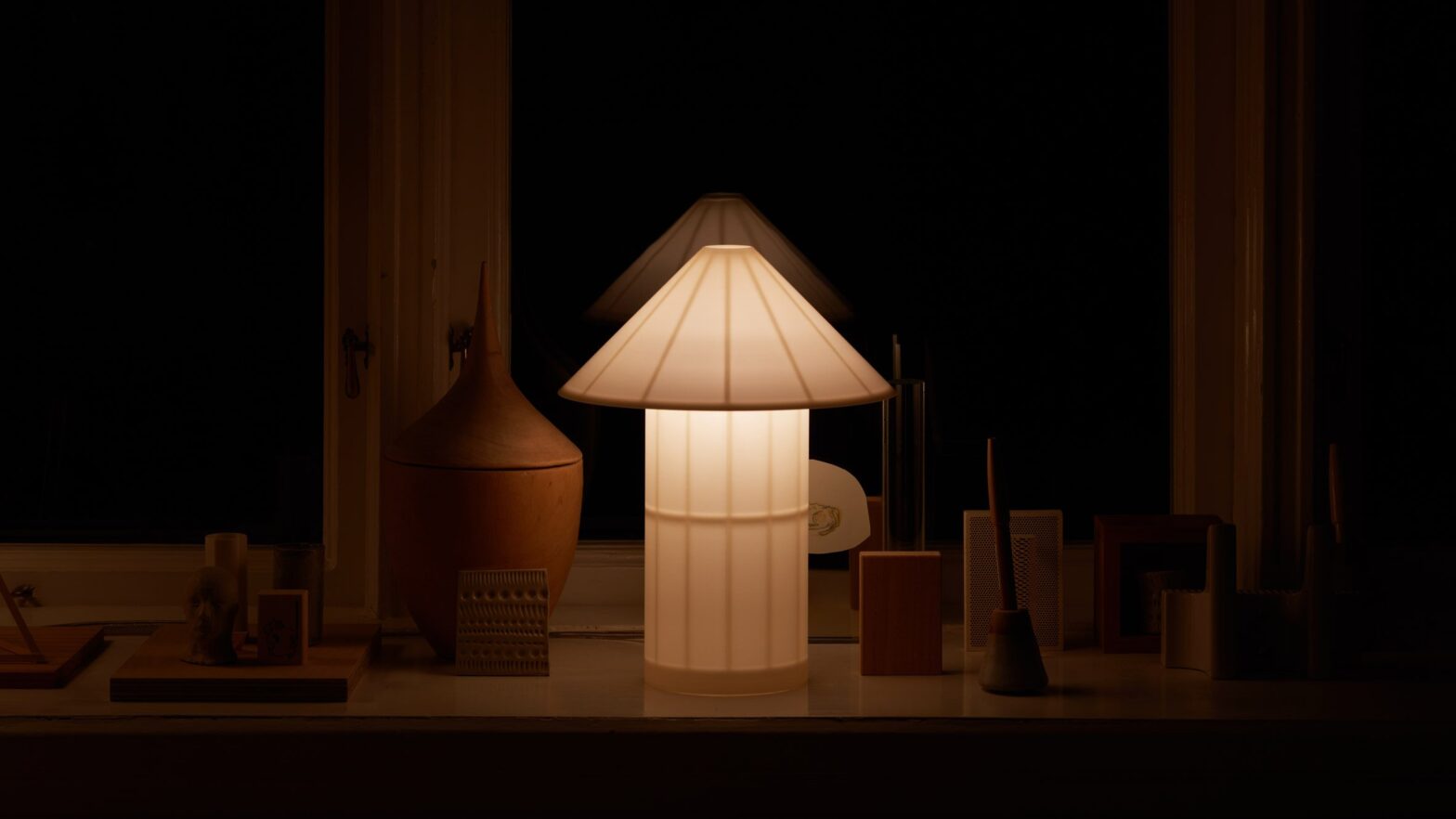Could a 3D printed lamp become a design classic? We look at some recent examples of how this technology can create timeless objects and not just disposable products.
Because there are so many 3D printed products on the market now – typically made from plastic – these parts are often viewed as cheap and disposable.
Now designers want to prove that additive manufacturing can create objects with long-term value and qualities not possible with other forms of production.
This is most evident in lighting design, where 3D printed plastics or bioplastics can offer surprising mixes of shape and translucency.
“When it comes to visual effects and transparency, the geometries and shapes that 3D printing enables are difficult to achieve with other transparent materials,” said French designer Lucas Zito.
“Plastic will never be marble, oak, metal or glass, but it allows us to explore everything that lies beyond these categories.”
“The narrative creates emotional resonance”
Zito, who specializes in 3D printed lighting, believes that the key to producing additively manufactured designs that people actually want to keep is to trigger emotions or memories.
“The essence of durability lies in both the user and the object itself,” he told Dezeen. “The narrative behind an object, whether spoken or unspoken, creates emotional resonance.”
“A plastic lamp will last as long as any other, as long as the user wants to keep it.”
Some designers are exploring a softer side of 3D printing, using the technology to create designs that are reminiscent of paper or textiles but are inherently more durable.
Others forego complex geometries, a common trend in 3D printing, and instead reinterpret timeless shapes.
Norwegian designer Daniel Rybakken has adopted both approaches in his latest design, a translucent version of a classic table lamp. He wants to show that complexity is not always the best approach to 3D printing.
“Since the first 3D printed objects began selling over 20 years ago, the main trend has been to make geometry more complex,” he said.
“I wanted to design something that felt both familiar and unique, giving a hint of a more complex substructure without falling into the ongoing trend of overly complicated design.”
Here's a look at eight lighting designs that suggest a bright future for 3D printing:
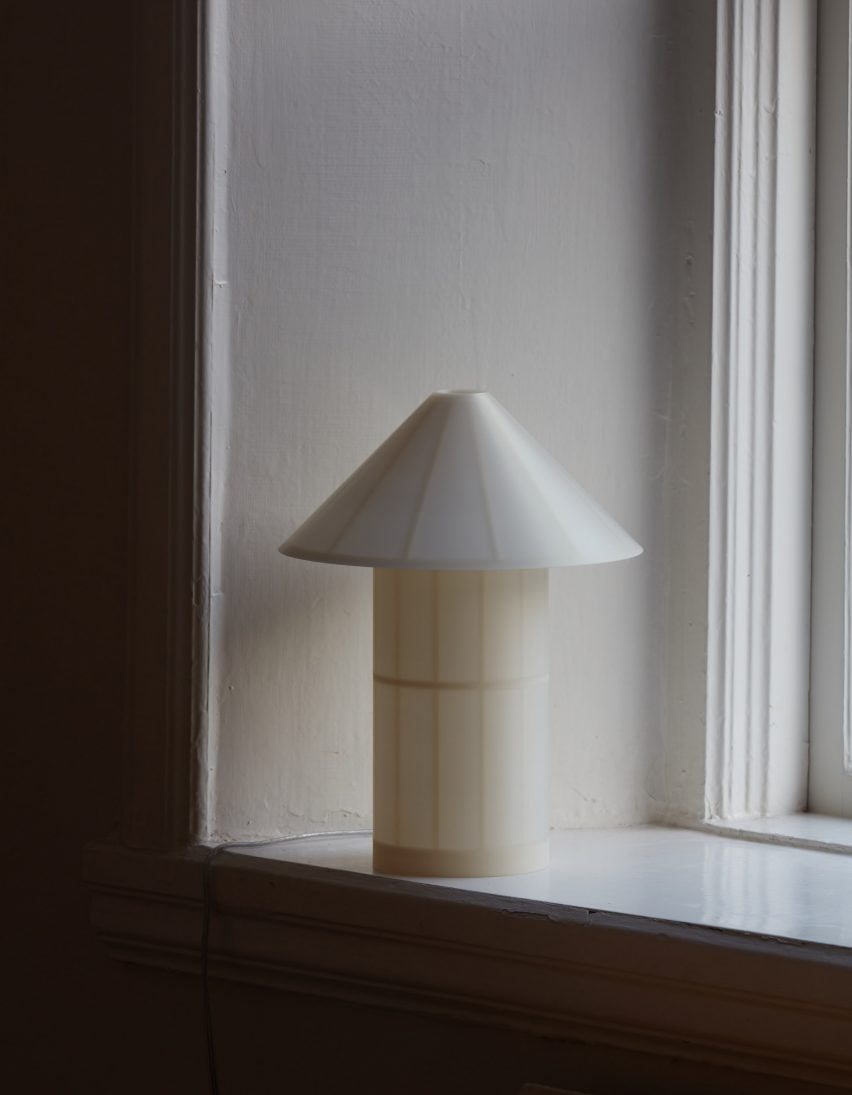
Daniel Rybakken's Stillas is a translucent version of an archetypal table lamp
Sweden-based Rybakken designed Stillas for Czech 3D printer company Prusa Research, based on the shape of a classic table lamp and shade.
It features a PLA plastic body that is so thin that the slim “scaffolding” frame is visible through the material.
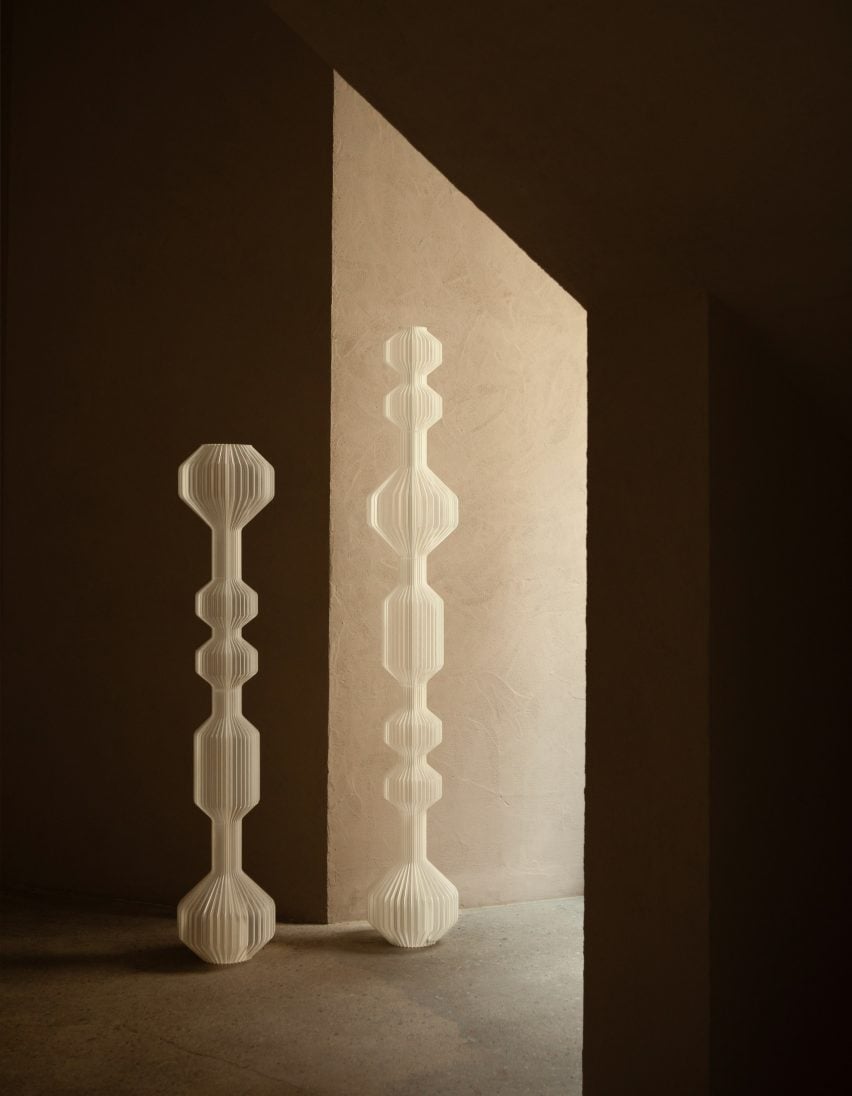
The Buoy Lamps by Lukas Zito are a series of fluted totems
Paris-based Zito has released a range of eye-catching 3D printed lamps over the past four years.
The Buoy lamps have become his trademark. Available in vertical and horizontal configurations, these ridged PLA lamps resemble buoys bobbing in the ocean.
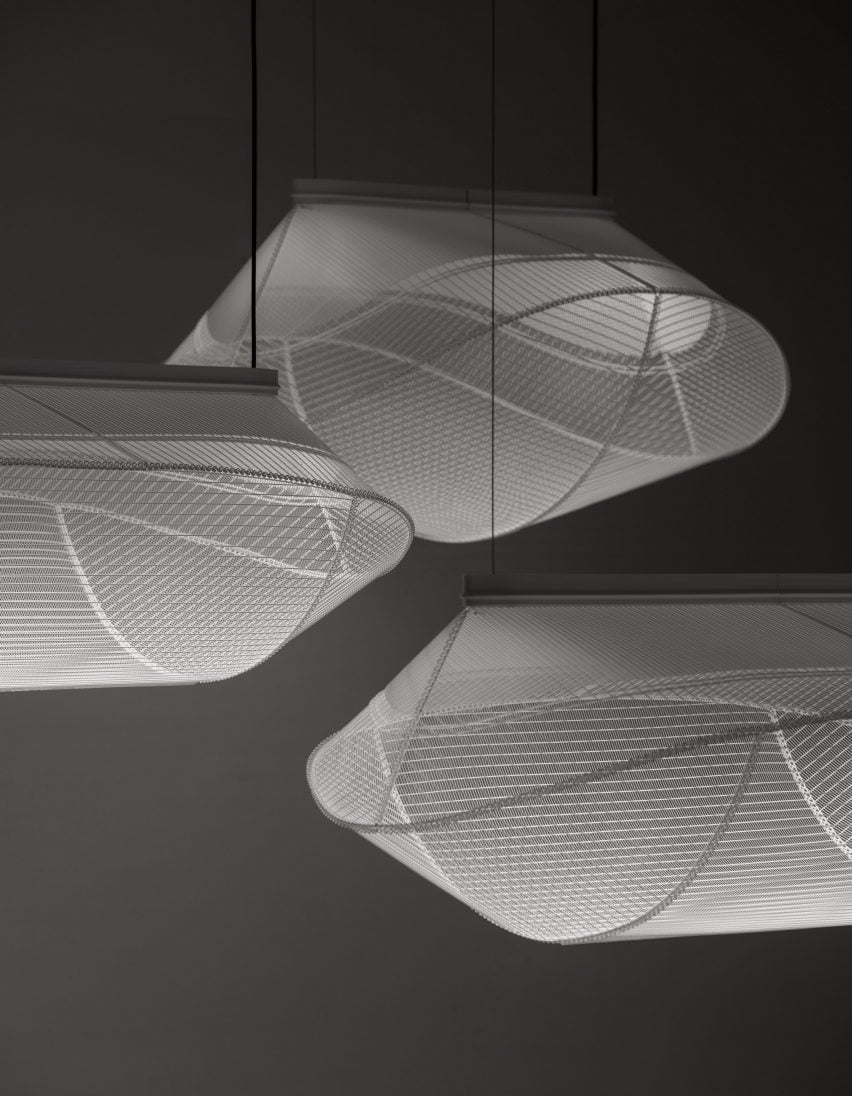
Raw Edges transforms 2D meshes into ethereal sculptures with LightMass^
Yael Mer and Shay Alkalay from London studio Raw Edges have launched their own lighting brand LightMass^, offering lightweight mesh pendant lights that are lit from within.
Made from a PLA and biopolymer blend, their designs are 2D printed, then folded and assembled, creating 3D shapes that look like line drawings floating in space.
LightMass^ is nominated in the lighting category for the Dezeen Awards 2025.

Crème Atelier takes on ice cream with soft serve lamps
Stockholm-based Crème Atelier took inspiration from the swirling shapes of ice cream with its sorbet-colored soft serve lamps, which were featured on Dezeen in 2023 and were nominated for the Dezeen Awards the same year.
Since then, designers have expanded the range and introduced both extra-large and portable versions.
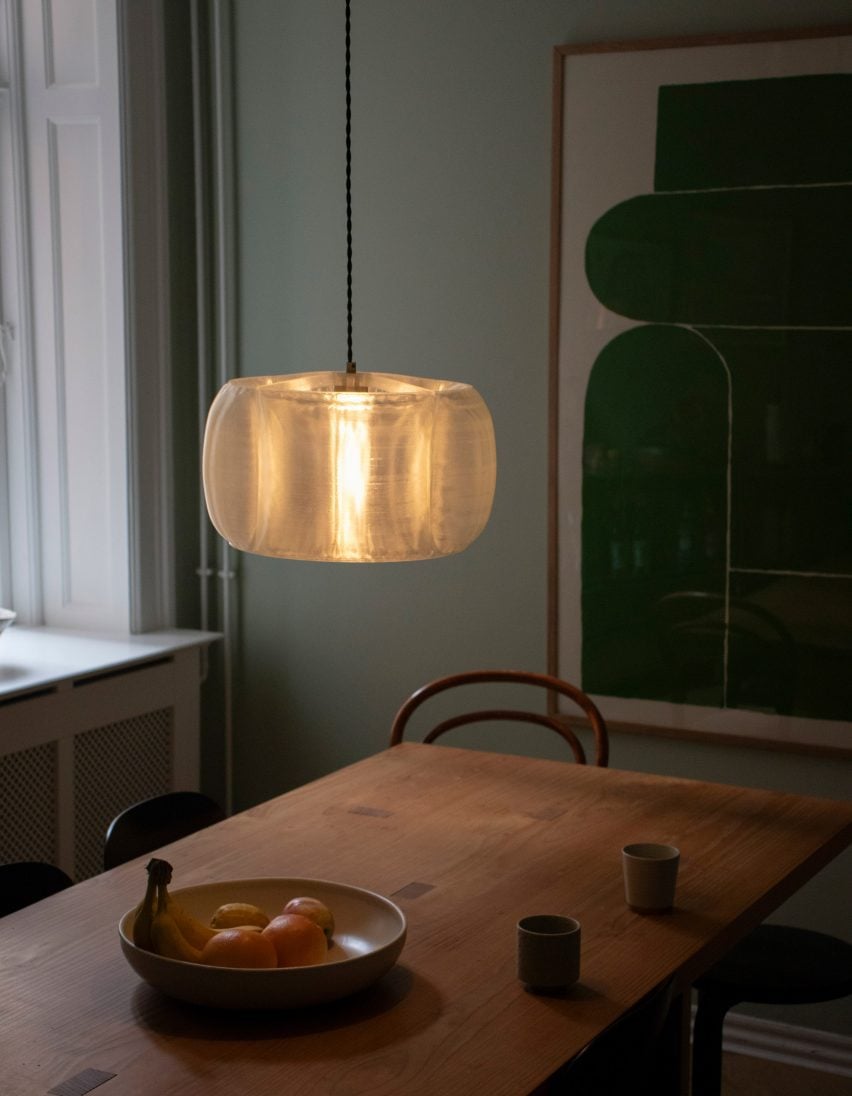
The Pascal lamp from 91-92 looks like an inflatable boat
Copenhagen-based Studio 91-92 used 3D modeling tools to develop the soft, soft shape of the Pascal lampshade, which is printed from flexible TPU (thermoplastic polyurethane) plastic.
As Dezeen's Jennifer Hahn pointed out, the result is “vaguely similar to the inflatable water wings that kids wear for swimming”, even if it's not actually inflated.
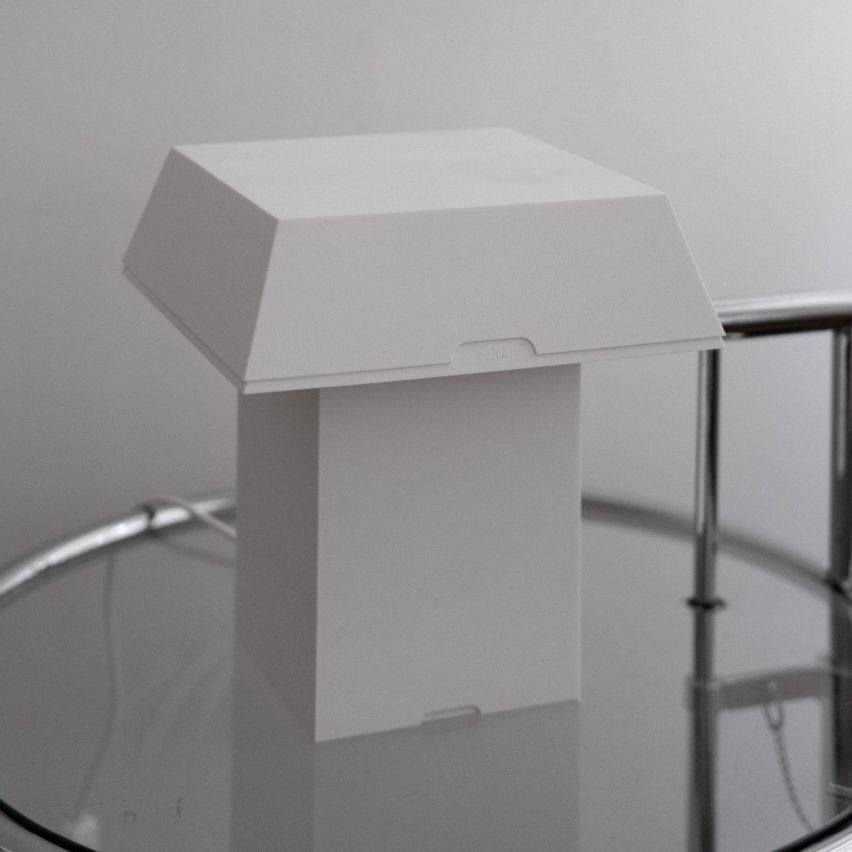
The lamps in the STL series from ObjetFormt are based on paper boxes
With their matte PLA surfaces, the STL series lamps were designed by Dutch studio ObjetFormt to look like ubiquitous cardboard storage boxes.
An edition number is embossed on the paper-like surfaces, giving the impression that they are valuable art objects and not anonymous containers.
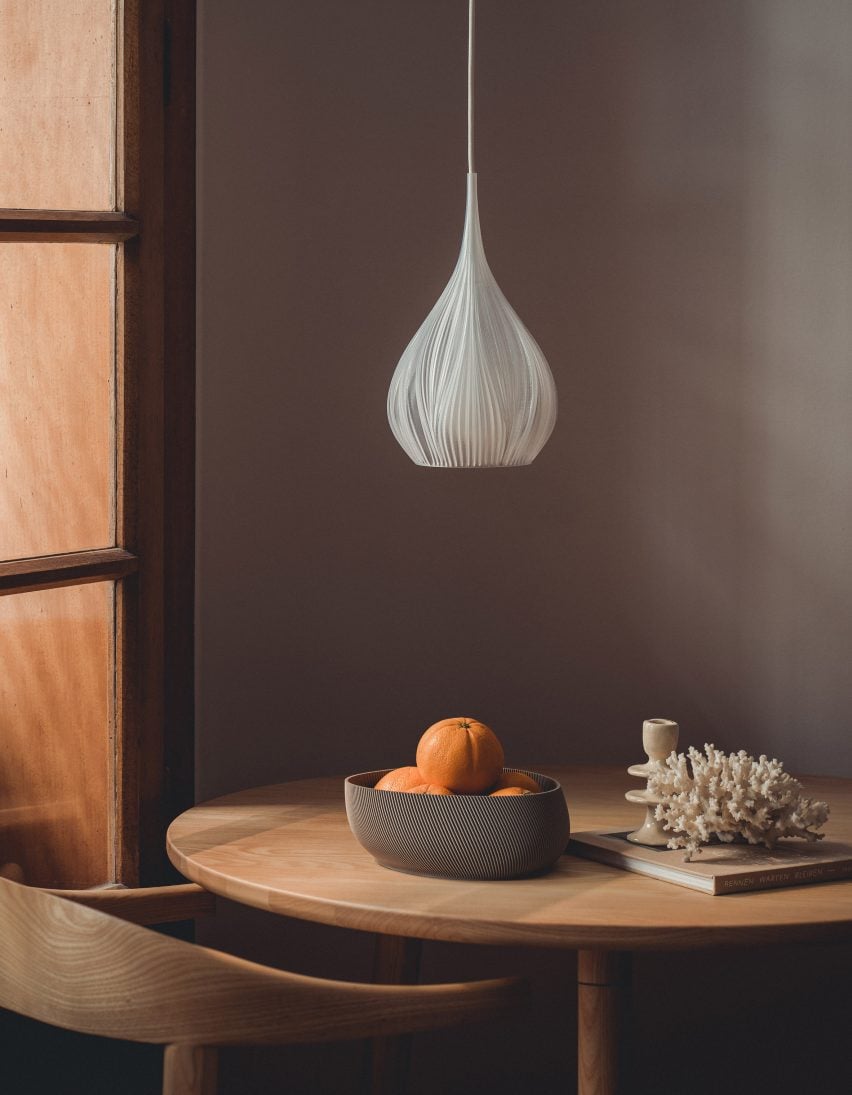
Sheyn creates delicate, fabric-like folds in Fald Pendant
Fashion designer Issey Miyake's pleated garments are echoed in the flowing shapes of this teardrop-shaped pendant lamp.
Designed by Nicolas Gold, co-founder of the Vienna-based studio and brand Sheyn, the PLA Fald pendant lamp is intended to evoke a feeling of subtle waves.
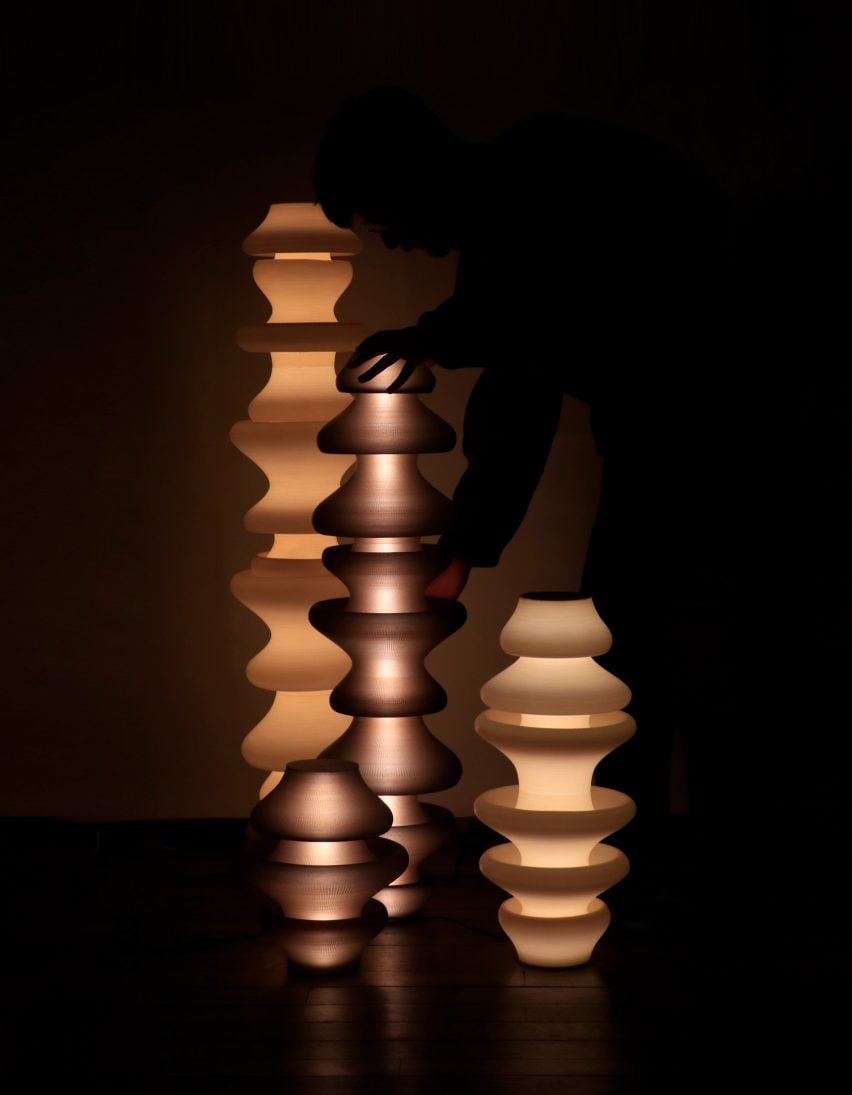
Squish Totem by Emmanuel Hugnot puts a new twist on the hourglass
French designer Emmanuel Hugnot has developed a technique for forming 3D printed objects using woven surfaces that bend like textiles when heated.
The Squish Totem is a floor lamp composed of stacked modules, with bends allowing for double curvatures.
